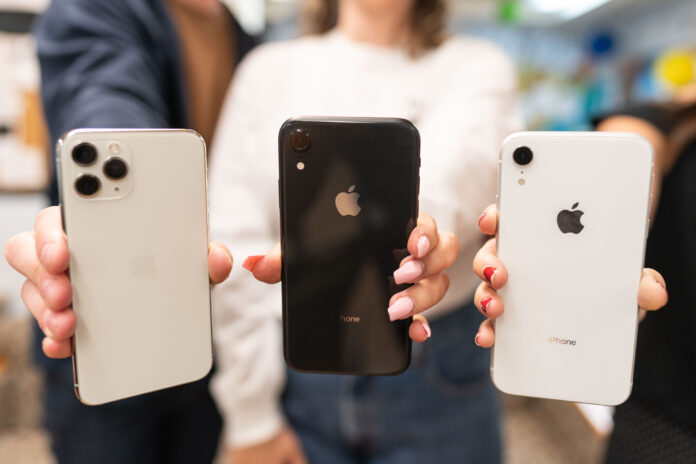The story behind Apple’s hidden treasure
The Moscone West Conference Center in San Francisco, Calif. on Jan. 9, 2007. That was where and when Steve Jobs, CEO of Apple Inc., unveiled a sleekly-designed 4.5 by 2.4-inch device— a device that would revolutionize the world and how we interact with it.
This week, I posed two questions to UC Davis students. First, I asked what the most important invention of the last 12 years is. Most responded with the iPhone or smartphone, though I got a few other responses as well: sanitary systems for impoverished countries, ride-share services, 3-D printing and legal cannabis. If they answered iPhone, I asked a follow-up question: who designed what they thought to be such a transformative invention? Almost everyone responded with Steve Jobs or “the Apple guy.”
For most people, when they think “iPhone,” they think of Jobs. During iPhone mania, Jobs swept up most of the limelight as the company’s media magnet. He was and remains the face of Apple, and because of that, much of the public directly credits Jobs with Apple’s turnaround and the products the company has created. Although the mercurial visionary was crucial to the iPhone’s creation process, he was not the lead designer. That title belongs to Jony Ive, a 52-year-old industrial designer from London, England.
Ive stands in direct contrast to Jobs; he is restrained, introspective and deliberately keeps out of the media storm. One quality he does share with Jobs is the drive of a high-powered locomotive. Ive grew up in the neighborhood of Chingford, in northeast London, where he lived and breathed design. He spent much of his childhood sketching and tinkering alongside his father, a professor of design at the local college. Ive moved into a design career, studying at Northumbria University in Newcastle, England.
From 1990 to 1992, Ive worked for Tangerine, a London-based company contracted by Apple. While at Tangerine, Ive worked closely on Apple-related products and made the full-time switch in Sept. 1992. At Apple, Ive remained under the radar until he caught Jobs’ eye with his work ethic and fine-tuned design sense. Jobs promoted Ive to head of industrial design and, from there, the team flourished. Under Ive’s leadership, the design team created some of the most iconic products of the last two decades: the iMac, iPod, iPhone, iPad, MacBook and Apple Watch.
During his academic and professional career, Ive embraced a design outlook shaped by Dieter Rams, the chief engineer for Braun appliances. Ive was also influenced by The Bauhaus, a German design school operational between 1910 and 1930 and home to many famous designers like Marcel Breuer and Mies Van Der Rohe. The “Less is More” mantra, which was taught by The Bauhaus and implemented by Rams, is evident in much of Ive’s work today.
“The quest for simplicity has to pervade every part of the process,” Ive said in an interview with The Telegraph. “It really is fundamental.”
To Ive and Apple, simplicity, or rather removing parts that are nonessential to a product’s goal, is the central goal in the design process (R.I.P. to the aux port).
The pièce de résistance in Ive’s design legacy may be the iPhone — the introduction of which made massive strides in the easy-to-use handheld touch interface which many of us have become so accustomed to. The iPhone debuted at the perfect time, providing ingenious technology and an astonishing amount of computing, all of which could fit in your pocket. Even considering all the innovative tech that is packed into the iPhone, it is through the shape and user interface design that the iPhone maximized utility and ingrained itself deep into modern culture.
Mackenzie Neilson, a long-time iPhone user and fourth-year nutritional biology major, commented on the iPhone’s design and how it stacks up for him compared to the competition.
“It’s simple to navigate around [with] how the apps are organized,” Nielson said. “The iPhone is a little more intuitive than the Android and it’s a bit more inviting.”
Ive was instrumental in crafting the user interface layout and shaping its form — focusing on the detail of its materials, bezels and feel. Ive and Jobs concentrated their efforts on making a tool that is an extension of oneself — as personally intuitive as speech or movement.
Ive’s efforts were acknowledged by Time, when the iPhone was named 2007’s Invention of the Year, but the true affirmation comes from the over 1.4 billion active iPhones in circulation today.
Ive’s contribution to Apple extends past its products. He maintains a steadfast dedication to shaping Apple’s culture and environment. Most recently, he played a key collaborative role with Sir Norman Foster, the British starchitect in the design of ApplePark, Apple’s $5 billion Cupertino headquarters. Reminiscent of an alien spaceship, the hub stands as a monument to the brand crafted by Ive and Jobs — a brand igniting thoughts of detail, sophistication and dominance.
Now, after an almost 30-year tenure of pulling the strings behind the scenes, the Financial Times reports that Ive is stepping down from his position. Ive cited reasons including the end of major projects like ApplePark and optimal timing for forming his own design firm LoveFrom for his decision.
There was speculation on additional issues implicated in Ive’s decision, according to a report from the Wall Street Journal. People close to Ive contend that he may have been frustrated at management’s decisions to emphasize operations and finance, drawing attention away from product innovation.
News of Ive’s departure correlated with a 0.84% drop in Apple’s stock price, though the stock price has bounced back since then. Ive’s decision, in addition to Tim Cook’s statement about Apple’s new focus on becoming a service-based company, signals winds of change billowing through the sails of the tech behemoth.
Written By: Andrew Williams — arts@theaggie.org




